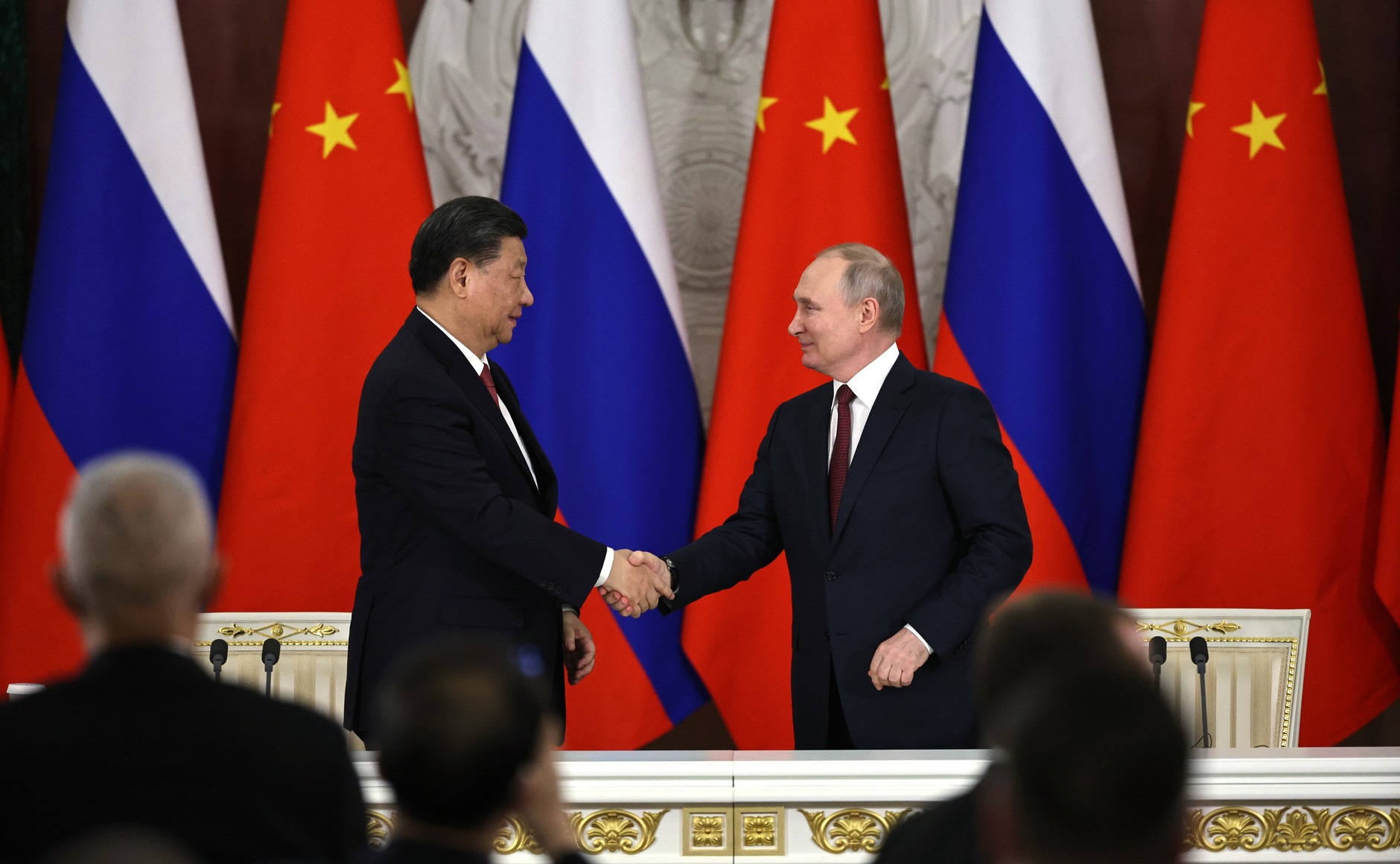The Final Stages of China’s Anti-Monopoly Law
The Final Stages of China’s Anti-Monopoly Law
After more than 10 years of drafting and review, on June 24, the Standing Committee of the National People’s Congress of the People’s Republic of China (NPC) began its first “reading” of a draft Anti-Monopoly Law (AML). Earlier in the month, on June 7, the State Council approved in principle, a draft AML apparently dated May 22, 2006. In the meantime, the University of International Business and Economics has apparently begun consulting with the Ministry of Commerce (MOFCOM) on the training of future regulators, and MOFCOM has begun drafting implementing regulations. Yet, based upon published and unofficial descriptions of the draft approved by the State Council and the draft being reviewed by the NPC, it is unclear that the draft being reviewed by the NPC is the same draft that was approved by the State Council. The precise contours of the proposed law are therefore still unclear.
A Comprehensive Update
Based upon available public and private descriptions of the differences among the draft approved by the State Council, the draft being reviewed by the NPC and the widely available draft dated November 11, 2005, the current draft of the AML being debated by the NPC contains the following attributes:
• The express goals of “prohibiting monopolistic conduct, protecting and promoting market competition, safeguarding the legitimate rights and interests of consumers and the public interest and ensuring the healthy development of the socialist market economy.”
• Prohibitions against agreements that “eliminate or restrict competition.” Several categories of agreements that are deemed to violate the law range from those among competitors that “fix, maintain or change prices of products” or “limit the purchase of new technology, new facilities or limit the development of new products and new technology” to those among trading partners that “fix the resale prices of products to third persons or impose other trading conditions that materially eliminate and restrict competition.”
• Exemptions from the prohibitions against “monopoly agreements.” Exemptions are established for agreements that are considered necessary to achieve goals ranging from “improving technology and research and development of new products” to “improving operational efficiency and enhancing the competitive capacity of small and medium-sized undertakings” to “during periods of economic depression, moderating serious decreases in sales volumes or distinct production surpluses.” The exempt agreements, however, must not “substantially eliminate competition in the relevant market,” and consumers must “share fairly the interests derived from” the exempt agreements.
• Prohibitions against the “abuse of a dominant market position.” A “dominant market position” is defined as “a controlling market position held by one undertaking or several undertakings as a whole, which is capable of controlling the price or quantity of products or other trading conditions in the relevant market or restricting or affecting other undertakings in entering into the relevant market.”
– The determination of the presence of a dominant market position is based upon apparent presumptions relating to market share. This includes a presumption that an undertaking holds a dominant market position if “the joint market share of three undertakings as a whole in a relevant market accounts for more than two-thirds.” Other listed factors include “the ability of the undertaking to control purchase market or sales market,” “the difficulty of entering the relevant market by other undertakings” and “other factors affecting market competition.”
– Conduct deemed to be “abuses of dominant market position” include “selling products at unfair high prices or buying products at unfair low prices,” “without valid reasons, refusing to trade with trading partners,” “without valid reasons, restricting trading partners to only trade with the undertaking or undertakings designated by the undertaking” and “other abuses of dominant market position.”
• Prohibitions against concentrations “that are likely to have the effect of eliminating or restricting competition.” “Concentrations” include mergers, an “acquisition of voting shares or assets of one or more other undertakings to an adequate extent” and “an acquisition of control of other undertakings by contract, technology or other means, or the capability of imposing material effects on competition.”
– A premerger notification regime is established, under which concentrations with sufficient connections to China and of sufficient size must be notified to the AML Enforcement Authority. The premerger review process includes a preliminary review period of 20 working days, during which the AML Enforcement Authority considers whether to review the transaction further. If the AML Enforcement Authority decides to make further review, there may be a further review period of 90 working days that may be extended by 30 working days under certain circumstances.
– In the November 2005 draft, there are three alternative nexus tests, including one in which sufficient nexus is found when, if the value of the transaction is unknown or is below RMB 400 million, “the aggregate assets or turnover of all the undertakings involved in the concentration in the preceding year in China’s domestic market exceeds RMB 5 billion.” There are reports that the May 2006 draft eliminates one of the three thresholds in the earlier draft and that the threshold has been raised to where either the value of the transaction in China is over RMB 1.5 billion or the aggregate assets or turnover in China of the parties exceeds RMB 10 billion. There are other reports that indicate that a market share threshold for notification has been restored from earlier drafts, and that the threshold amounts have been left blank in the current draft.
• The establishment of a multi-tier enforcement mechanism. The draft being debated by the NPC apparently provides for the following: 1) an Anti-Monopoly Commission “to organize, lead, harmonize the anti-monopoly work,” 2) one or more AML Enforcement Authorities designated by and under the supervision of the State Council and 3) the discretion by the AML Enforcement Authority to authorize “the corresponding organs of the People’s Government of province, autonomous region and municipality to perform the anti-monopoly function.”
– Unofficial reports indicate that the May 22 draft changed the name of the Anti-Monopoly Commission to Anti-Monopoly Enforcement Commission. Earlier drafts alternated between a single enforcement authority that may be directly under the supervision of the State Council and several enforcement authorities that may each have jurisdiction to enforce different sections of the AML.
– The Anti-Monopoly Commission “is composed of the principals of relevant departments and organs of the State Council and certain experts” and will formulate “policies relating to competition, putting forward legislative proposals on anti-monopoly laws and administrative regulations,” organize investigations, supervise and harmonize the work of the AML Law Enforcement Authority with that of the “relevant industrial directing and supervising departments” as to their competition enforcement activities, and decide “the handling of major anti-monopoly cases.”
– The AML Law Enforcement Authority will “put forward and publish anti-monopoly regulations, rules and specific measures,” review concentration notifications, investigate and handle monopolistic activity and evaluate market competitive conditions. Its powers will allow it to require the submission and copying of materials and information (including bank accounts), to conduct investigations of business and other locations, and to seal up business locations. The AML Enforcement Authority must publish its decisions that a violation has occurred. It may impose cease and desist orders as well as penalties up to 10% of the total turnover in the case of prohibited agreements or abuse of dominant market position. Unofficial reports indicate that the draft approved by the State Council places a RMB 10 million cap on such penalties. In cases of violations of the provisions regarding concentrations, the AML Enforcement Authority may impose fines of less than RMB 5 million and order corrective action.
• Sectoral regulators enforcing sectoral laws and regulations that provide for investigation and disposition of conduct prohibited by the AML will have primary jurisdiction over competition enforcement in those sectors and shall report the results of their investigations to the AML Enforcement Authority. Only if the sectoral regulator fails to investigate may the AML Enforcement Authority investigate, in which case the sectoral regulator must be consulted. There are some unofficial reports that the May 2006 draft may provide the AML Enforcement with more authority in regulated sectors than the November 2005 draft did.
• The principle that administrative entities should not abuse their powers “to restrict the goods, capital or technology to flow freely and compete effectively among regions.” The November 2005 draft replaced a chapter on “Administrative Monopolies” that was found in earlier drafts, which elaborated on this principle with one article that articulated this principle. There was no indication that the May 2006 draft approved by the State Council differed in this respect from the November 2005 draft. CCTV and Guangming Daily reports indicate, however, that the draft AML being debated by the NPC does include a chapter on “Administrative Monopolies.”
• The law will apply to group and industrial associations but not to “cooperation, association or other coincident conduct by farmers and farmers’ professional economic organizations during the course of production, processing, sales, transportation, storage and other operating activities of agricultural products.”
• The law will apply to “conduct by undertakings eliminating or restricting competition by the abuse of the rights stipulated by the intellectual property rights laws or administrative regulations.” Earlier drafts also included an “essential facilities” provision, under which owners of assets considered essential may violate the law if they deny others access to those assets. This clause was not in the November 2005 draft and does not appear to have been restored in the later drafts. If restored in the AML, it would have a significant impact on holders of IPR.
Unsettled Issues
The major issues that apparently remain subjects of vigorous discussion are the enforcement structure for the law and the treatment of administrative monopolies. While the treatment of market dominance, the types of concentrations that will be subject to review as well as the standards for review of concentrations, a potential essential facilities provision and the interplay of the AML with IPR remain concerns for foreign businesses, the consistency of the recent drafts of the AML in these areas indicate that the debate on them has essentially concluded in China.
The debates with respect to the enforcement structure and the treatment of administrative monopolies reflect the major internal interests that may be substantially affected by the AML. The controversy over the enforcement structure reflects the competing jurisdictional interests of competing government departments, especially sectoral regulators and regulated sectors. The discussion regarding the treatment of administrative monopolies reflect the reality that much of the distortions in the Chinese economy result from local governmental actions that favor local activity and are inconsistent with central government policy. Underlying both is the unease with the transition from a command economy that is under, as one pundit put it, “the visible foot” of the government to one which relies on “the invisible hand” of the marketplace. Adding to the anxiety is a lack of consensus on both the desirability and feasibility of prohibiting the local protectionism that motivates many administrative monopolies.
Implications of Enactment
The different enforcement mechanisms that have apparently been incorporated into the recent drafts have major implications for the likely impact of the AML. As has been the experience in the United States, giving sectoral regulators primary jurisdiction over competition enforcement in their sectors is likely to result in industries that are relatively insulated from vigorous competition. Sectoral regulators are constitutionally predisposed toward industrial policy such as fostering national champions and protecting incumbents and not toward allowing market forces to act freely. Similarly, having a commission composed of representatives of sectoral regulators and a cross section of other governmental entities is likely to result in politically driven enforcement, rather than the thoughtful development of a coherent competition policy. In addition, having several enforcement agencies with jurisdiction over different provisions of the AML is likely to result in jurisdictional overlap and controversy since it may not be uncommon for a single course of conduct to arguably implicate more than one provision of the AML.
As for administrative monopolies, there is substantial concern that the AML will do little to increase competitiveness in the Chinese economy if local protectionism is not directly addressed. The fact that the principle of prohibiting administrative monopolies was retained (albeit without any enforcement provisions) in the November 2005 draft may reflect some consensus that local protectionism is counterproductive. Those who favor adoption of strong prohibitions against administrative monopolies argue that the greatest impediment to a competitive economy in China is local protectionism. Therefore, it should be the central target of any meaningful Chinese competition law (Xinwen Weekly, December 6, 2005).
Others argue, as Huang Yikun did in the January 16 issue of The Economic Observer, that while administrative monopolies are a major problem, it is one that needs to be addressed outside of a competition law, especially one in the form of the November 2005 draft; a much more powerful remedy is needed to counter the forces that advocate the maintenance of the status quo. Moreover, from the perspective of commentators such as Huang, a Chinese competition law would do better to address the major industries that are arguably outside the jurisdiction of the draft AML being considered, particularly regulated sectors such as telecommunications and transportation.
The outcome of the debate on both these issues will have major implications for the impact of the AML once it is enacted. If, as appears increasingly unlikely, an independent enforcement agency is established, then the potential for development of a coherent competition law regime is greatly enhanced. If there is an independent enforcement agency that is adequately staffed and provided with resources, crucial factors determining the impact of the law will be the implementing regulations and processes adopted by the agency. If detailed provisions regarding administrative monopolies are not enacted and only a statement of principle is retained in the final statute, there remains the potential that the principle will take root and lead to the development of a body of law and, perhaps more importantly, a culture that curtails local protectionism.


